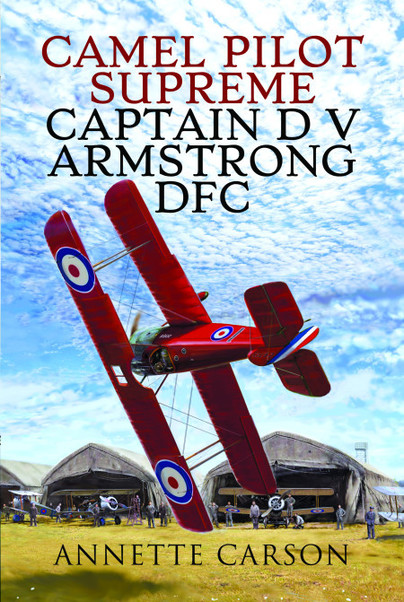Camel Pilot Supreme

By Annette Carson
In aviation’s pioneering days the best and bravest airmen pushed the boundaries of flight in all dimensions and attitudes. When aeroplanes went to war this exploratory art, now known as aerobatics, was called ‘stunting’ in breezy RFC slang. Initially forbidden as foolhardy, its importance for survival soon became paramount in the life and death mêlées of dogfighting.
But pilots still delighted in the joy and exuberance of aerobatting for its own sake, and they recognized a master of that very special skill in young D’Urban Victor Armstrong, whose displays were nothing short of electrifying. Fluid and dramatic, performed with flair at ultra-low level, his exhibitions left spectators shaking their heads in disbelief. Even a century later his feats – some illustrated here – continue to evoke astonishment in piloting circles.
Until this biography little was known about his wartime experiences, and even less about his South African background. His great value to the authorities lay in his superb handling of the Sopwith Camel, which upon its introduction had taken a heavy toll in fatal trainee accidents. While still on active service he was sent around the units providing vivid proof that, properly handled, the stubby little fighter delivered the key to combat success: unrivalled manoeuvrability. His resultant fame eclipsed his other distinguished role in pioneering night flying and night fighting, an equally vital skill he was also detailed to demonstrate around the squadrons.
In these pages you will find yourself in the cockpit of the F.1 Camel and become acquainted with its rotary engine. You will meet many leading names including Billy Bishop, Cecil Lewis, Norman Macmillan, Robert Smith Barry, and the harum-scarum Three Musketeers from War Birds. Armstrong takes his place alongside them as one of the legendary figures of the first great aerial war.
Vintage Airfix Review:
It includes well written descriptions of early aviation technology and practises as well as aerobatic manoeuvres. There is also a sensitive narrative throughout, interweaving accounts from DVAs fellow pilots and friends.
DVA was a very talented and likable person, and this come across marvellously in this book.
A very impressing memoir of a very impressive man.

